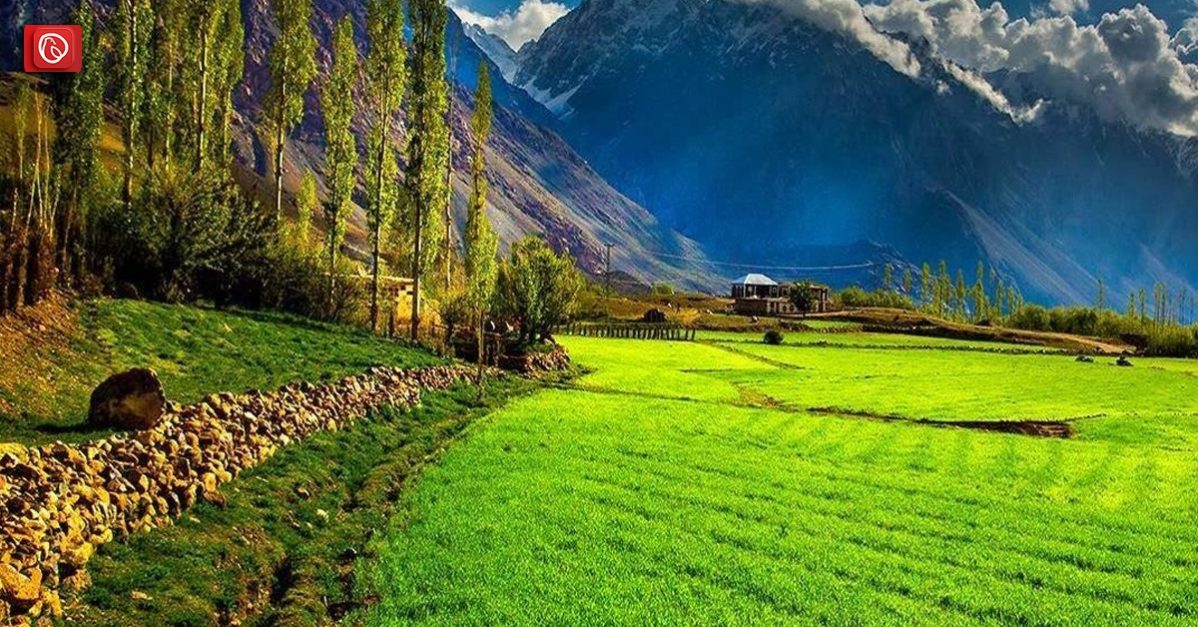
Source: Graana.com
Hoper Valley, situated in Nagar Valley district of Hunza Nagar, Gilgit Baltistan, Pakistan, is characterised by a collection of villages encircling a natural bowl-like terrain. This landform is positioned at a curve along the Altar Glacier, known as the Hoper Glacier. On the opposing side of the Hopar Valley, the pristine Altar Glacier converges with the Barpu Glacier.
The entirety of the valley is enveloped by the expansive expanse of the Hoper Glacier on all three of its sides. Graana.com has prepared a detailed tourist guide to Hoper Valley, including its history, glaciers in Hoper Valley, Rush Lake and more.
Situated 10 km away from Nagar Khas, the central town of Nagar Valley, the Hoper Valley is a remarkable testament to lush greenery and picturesque landscapes within the Nagar district. Known for its breathtaking beauty, Hopar Valley boasts the prominent presence of the Spantik Peak and the Hoper (Hopper) Glaciers.
The valley accommodates five distinct villages – Baroshall, Hakalshall, Gshashoshall, Ratal, and Holshall. Historical records pertaining to Gilgit suggest that the human settlement in Gilgit can be traced back to Baroshall. Notably, there exists a trekking route from Hoper to Skardu, facilitating an adventurous journey. Among the valley’s many attractions, Rush Lake holds a special place as a highly alluring tourist destination.
The Valley is a pivotal base camp for trekkers, with subsequent treks leading to the towering glacier peaks referred to as the Hispar Muztagh. The span of Hoper village commences at the Sapulter Har glacier stream and extends up to the glacier viewpoint in Holshall.
Beyond this juncture, trekking endeavours can be initiated, with the added convenience of a few restaurants and motels available. The inhabitants of the valley predominantly speak Burushaski, a linguistic enigma that has long intrigued linguists.
Beyond its enchanting natural beauty, Hoper Valley holds a significant historical significance. Among its verdant landscapes, one can come across remnants of ancient forts, settlements, and traces of bygone civilizations.
Furthermore, historical records about Gilgit assert that the origins of the human population in Gilgit can be traced back to the village of Baroshall in Hoper, as documented in historical texts.
Although the new road connecting Nagar Khas to Hoper Valley is currently under construction, it remains accessible even for small vehicles. Despite being a 4-hour journey from Gilgit city, the valley is an essential destination to include in any Gilgit tour.
If you happen to be staying in Karimabad Hunza or Nagar Valley hotels, the travel time can be condensed to a couple of hours.
Hoper Valley encompasses three distinct glaciers:
With an altitude of 8,000 feet (2,438 metres), Hoper Glacier has a close link to the Hoper village in Nagar District.
Situated at 3,344 metres, Barpu Glacier is positioned to the northwest of Phahi Phari and to the west of Rush Lake. Hoper village serves as the base camp for expeditions to Barpu Glacier.
At an elevation of 3,400 metres (11,154.86 feet), Mier Glacier follows the Barpu Glacier and features the prominent Miar Peak in the Nagar Valley. Notably, Rush Lake lies about 15 km north of Miar Peak and its accompanying glacier.
Rush Lake, one of the famous lakes in Pakistan, is present in Hoper Valley. It is a high-altitude lake near Rush Pari Peak at 4,694 metres (15400 feet), Rush Lake is one of the highest alpine lakes in the world.
The rush lake is located about 15 km north of Miar Peak and Spantik, in the Nogar Valley. It gets completely frozen during winter, and the best time to visit Rush Lake is from July to August. Summer is the perfect time to visit Hoper Valley.
Throughout the year, Hoper Valley remains adorned with snow-capped peaks. Nevertheless, from June to October, the valley experiences relatively moderate weather.
Subsequently, the conditions transition to blustery and chilly from November onwards. The climatic shift is attributed to the presence of glaciers and their influence on the valley’s ecosystem.
The must-do activities in Hoper Valley include:
Hoper Valley is one of the top paragliding destinations in Pakistan. Rozefs Tourism offers paragliding services within Hoper Valley, presenting the following essential considerations for those interested in paragliding:
Here are some hotels in Hoper Valley, Pakistan:
A: Hoper Valley is renowned for its breathtaking landscapes, encompassing verdant mountains, glaciers, and a cluster of five villages. It is also home to the impressive Spantik Peak and the Hoper glaciers, offering opportunities for trekking from Hoper to Skardu. Notably, Rush Lake stands out as the most sought-after tourist attraction within the valley.
A: The prime period to explore Hoper Valley is during the summer, spanning from June to September. These months offer warm and sunny weather with extended daylight hours. However, one can also savour the valley’s charm during spring and autumn, having pleasant and mild weather.
A: To reach Hoper Valley conveniently, begin by flying to Gilgit, the capital of Gilgit-Baltistan. Upon arrival in Gilgit, you can proceed via taxi or bus to Nagar Khas, which serves as the entry point to Hoper Valley. The drive from Gilgit to Nagar Khas typically takes around 2 hours.
For more related information, visit Graana Blog.
Karachi: Pakistan’s foreign exchange reserves held by the State Bank of Pakistan (SBP) rose by…
Islamabad – The Capital Development Authority (CDA) has formally approved the construction of the IBM…
ISLAMABAD – A meeting was held at the CDA headquarters under the chairmanship of Capital…
Lahore: The Lahore Development Authority (LDA) has secured approval for the construction of four new…
Islamabad: The Islamabad Chamber of Commerce and Industry (ICCI) has announced its plan to host…
ISLAMABAD: The Capital Development Authority (CDA) has reported significant progress in its citywide streetlight modernization…